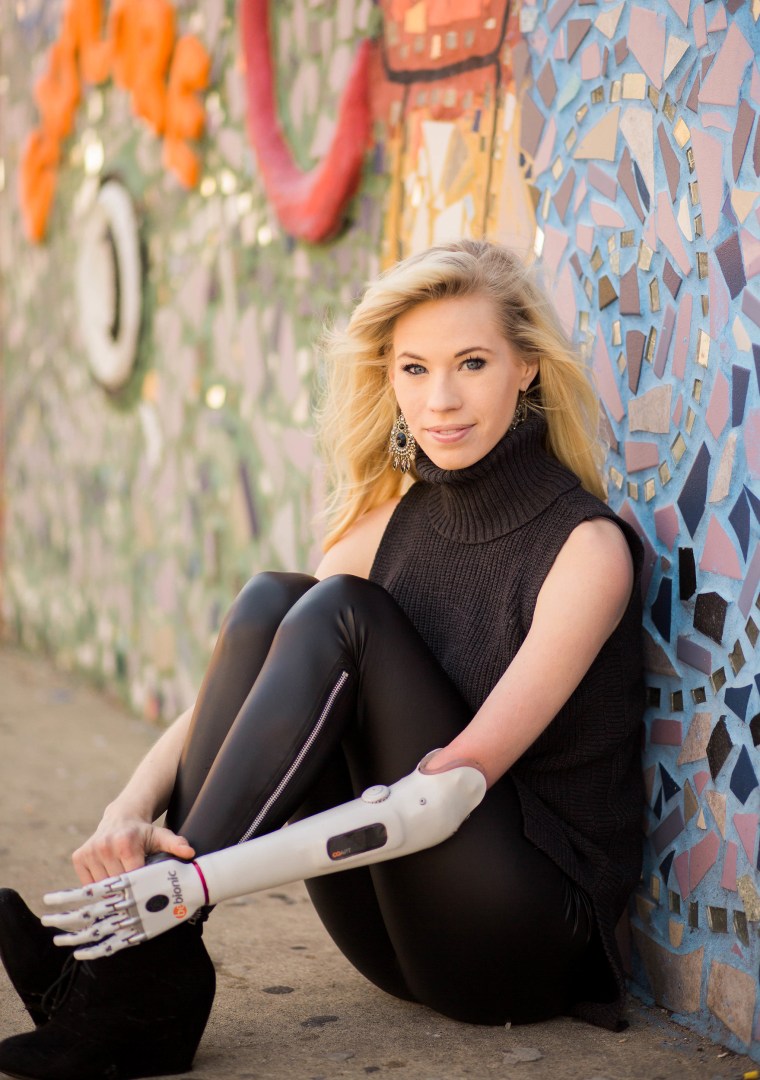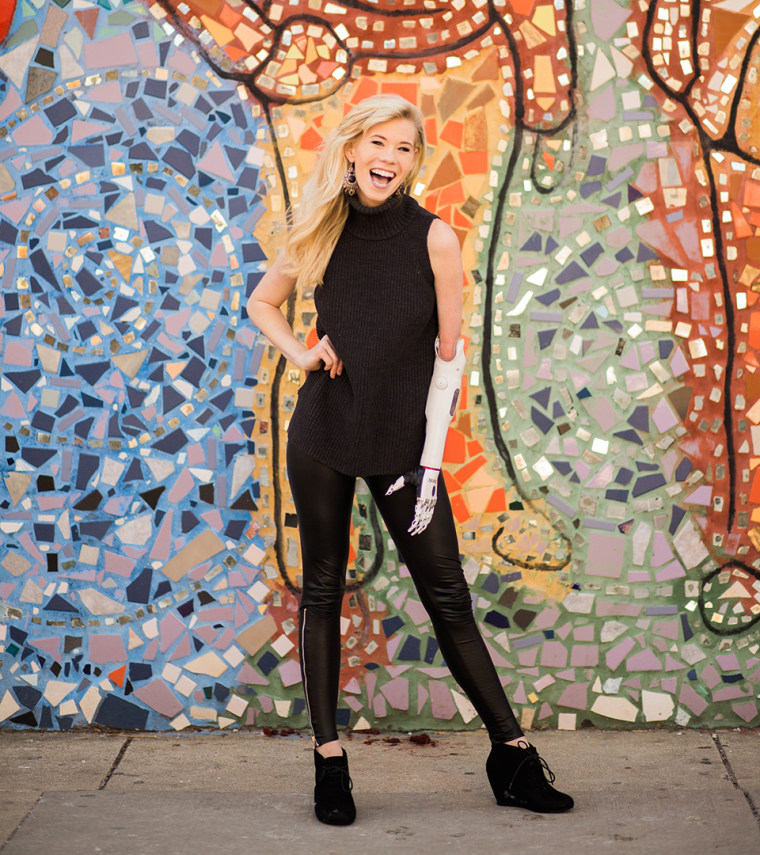When Nicole Kelly was born without a left forearm, her parents wanted to raise her to feel comfortable just as she was. They told her she could wear a prosthetic arm if she wanted to, but urged her to do what felt right for her.
“My parents were really awesome and a prosthetic arm was always an option. But it was never a forced option,” Kelly, 27, told TODAY. “I feel really lucky to be born into a family that encouraged me to do everything.”
Over the years, Kelly wore different prosthetic arms, but they never felt comfortable or natural. So she most often went without one and taught herself how to do most things with one arm.
“Yes, I have this difference and I do things a little differently, but I am still as able,” Kelly said.
In 2013, she started competing in beauty pageants and became Miss Iowa, which allowed her to compete in the Miss America contest in 2014. She was the second competitor in the pageant’s history to have a disability.
“That was the most attractive thing to me — I can wear a sparkly dress and talk about difference. That is why I did it,” she said.
Following Miss America, Kelly transitioned into public speaking and attended journalism school to get a master’s degree in broadcasting. On social media, she shares videos highlighting her life, showing how she curls her hair one handed, for example. Lately, the videos show Kelly trying something new — learning to use a sleek prosthetic arm.
“It is a big scary change,” she said.
Kelly’s been using a custom-made arm that uses the Coapt Complete Control system. It was developed at the Shirley Ryan AbilityLab and uses sensors in the arm that work with Kelly’s muscles. This allows her to control the arm by thinking about what she wants to do, just like with her right arm. If she wants to grasp an onion, for example, her arm muscles contract and send a signal to sensors, which tell the hand to close around the vegetable.
“What Nicole is thinking about … our system makes it happen,” said Blair Lock, CEO of Coapt.
Muscles give off electrical signals when they move and the sensors use that impulse to control the hand. What’s more, the arm adapts with Kelly.
“The system is quite powerful. As she learns, it can learn along with her,” said Lock.

It is commercially available at about 15 to 30 percent of the cost of the prosthetic arm and it works almost every powered prosthetic arm. The cost varies because the system needs to be paired with the device. Coapt only works for upper limb prosthetics, but Lock hopes that after testing and trials, it will be used for lower limb prosthetics.
Since receiving her arm this summer, Kelly has been demonstrating how it works on social media. (She will be compensated for her participation.)
She sometimes feels vulnerable because she makes mistakes and fumbles with things. But this honest view resonates with many of her viewers. A video of her opening a bottle of juice and picking it up — then promptly dropping it — has gone viral.
“I wanted to show my growth,” she said. “It doesn’t mean that I put on the arm and now magically I changed and I am like everyone else.”

She likes that her experiences can help others learn more about disability.
“I want to be able to educate you on my level of capability because I know that every interaction I have is a chance to change your understanding,” she said.